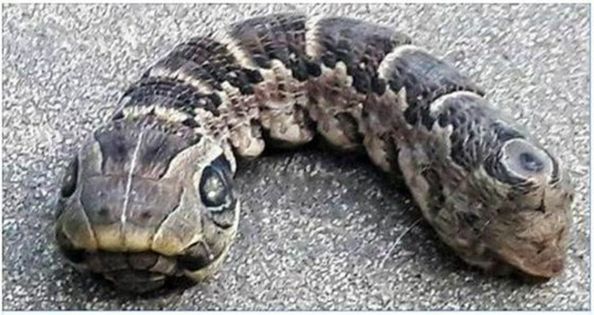The footage quickly gained attention, sparking discussions and speculations about the creature’s identity and origin. Experts eventually identified it as a caterpillar belonging to a rare species of moth native to Central America. The creature, which many believed was an Elephant Hawk-Moth Caterpillar, even had a remarkable defense mechanism—it mimics the appearance of a snake to deter potential predators.

Sporting two large “eye markings” behind its head, the caterpillar fools predators into perceiving it as larger than its actual size. This snake-like caterpillar, lacking conventional defensive weapons, uses mimicry as a survival strategy. By imitating the appearance of a snake, a creature often associated with danger and venom, the caterpillar deters predators from making it their prey.
This chance encounter with the snake-like caterpillar not only intrigued Eroles and her neighbors but also showcased the fascinating and rich biodiversity that exists in the natural world. The uniqueness of this caterpillar’s mimicry offers a glimpse into the complex and adaptive strategies that organisms employ for their survival.

